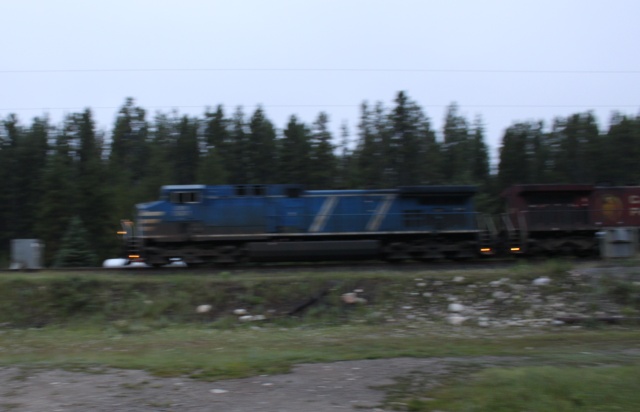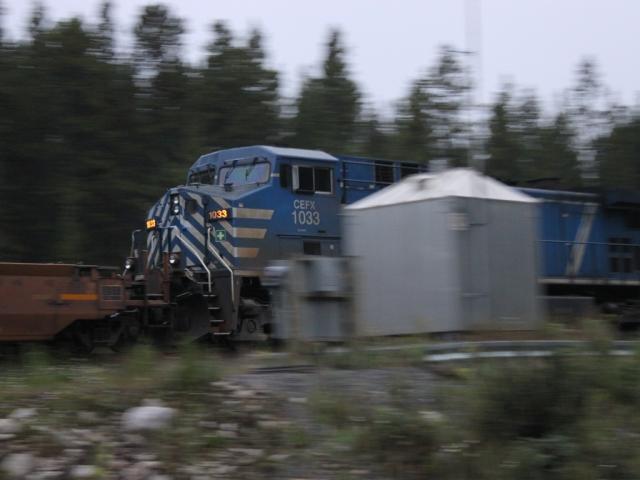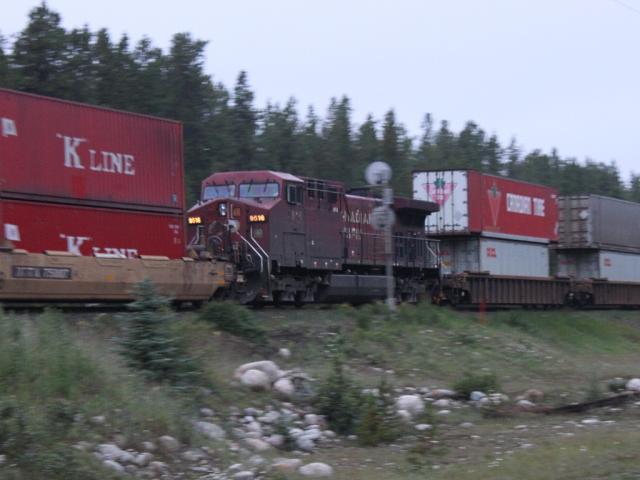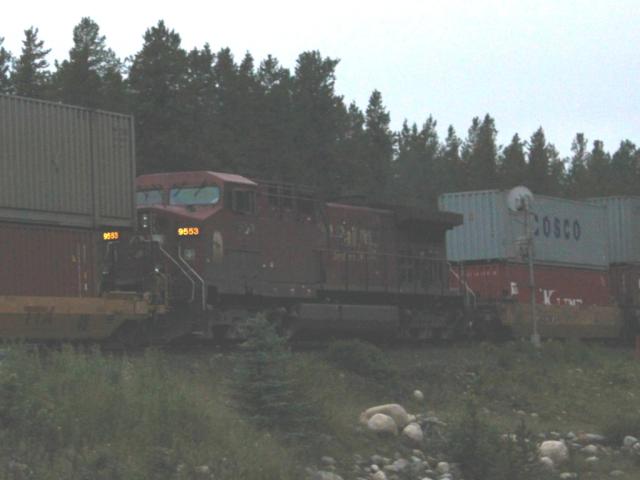I shot a very long eastbound intermodal train at Eldon siding near Banff, Alberta on August 7. This train had CEFX 1041 and a CP unit leading (CP 9467 I believe), then CEFX 1033 a ways down, then CP 9516 down farther, then CP 9553 near the end of the train. Three separate DPU units!
I shot it at 6:20 AM, before sunrise, in the woods, so there was not much light available. Here are the different units and the techniques I used to try to get some kind of usable photo.
Here's the head end, shot with default settings (F/3.5, 1/25s, ISO 3200). As you can see, it is impossible to read the unit number. The shutter speed was too slow.

For the next unit, CEFX 1033, I elected to pan the train and see if that would bring some portion of it into focus. I think it worked out OK for the unit number (F/5.6, 1/40s, ISO 1600).

I tried basically the same technique with CP 9516. The results weren't quite as good but they were OK (F/5.6, 1/32s, ISO 1600).

After that, I overrode the shutter speed to see what that would do. The picture was fairly sharp but very very dark. I did a lot of processing on this photo to get it to this state (F/3.5, 1/250s, ISO 1600).

Clearly selecting a lower shutter speed and panning produces better results.
Why was I at Eldon siding in Alberta? Those who follow me on Twitter know I was heading to Morant's Curve. More about that later.
No comments:
Post a Comment